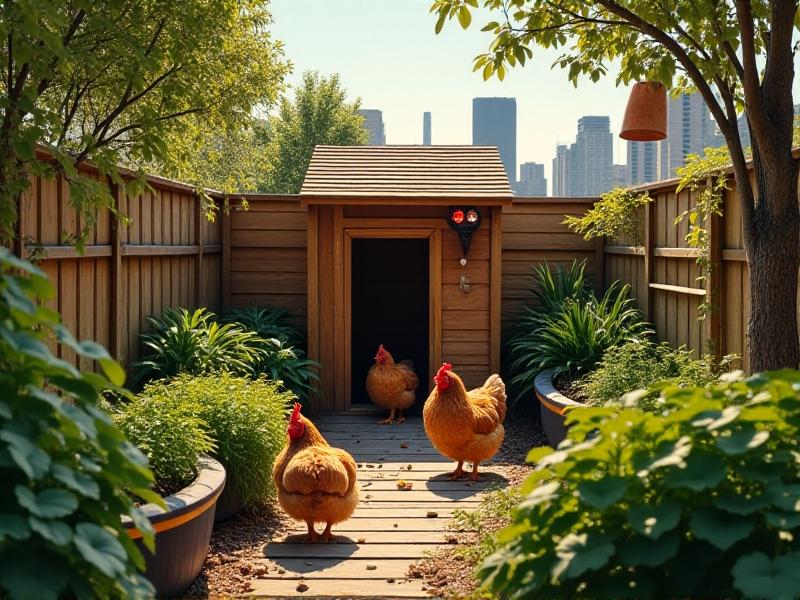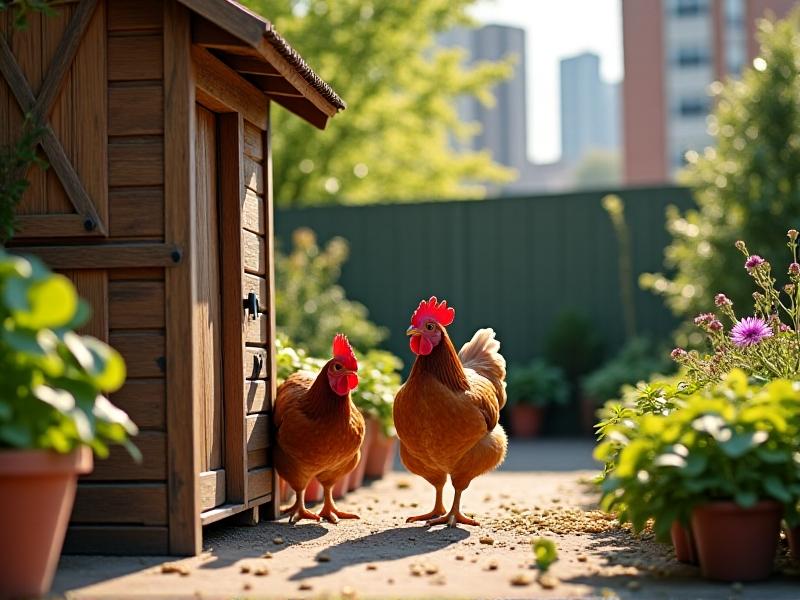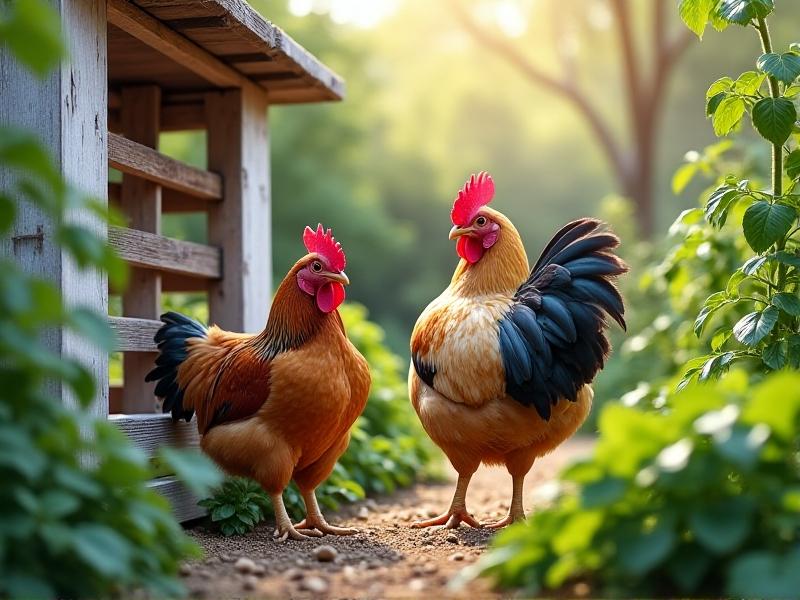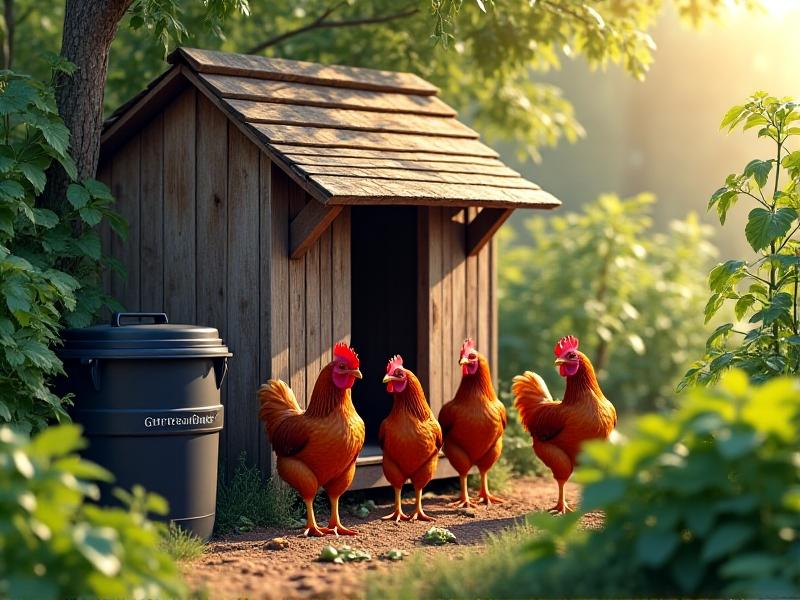The Ethical Urban Chicken Keeper: Responsible Practices for City Flocks
The Ethical Urban Chicken Keeper: Responsible Practices for City Flocks

Why Ethics Matter in Urban Chicken Keeping
Raising chickens in cities isn’t just about fresh eggs—it’s a commitment to balancing animal welfare, community relationships, and environmental stewardship. Urban settings amplify the consequences of neglect: cramped coops stress birds, noise disrupts neighbors, and improper waste management harms ecosystems. Ethical practices ensure chickens thrive as sentient beings, not just commodities. This means prioritizing their natural behaviors—dust bathing, scratching, and socializing—while mitigating urban-specific risks like pollution or predator access. By framing chicken-keeping through an ethical lens, urban farmers contribute to local food resilience without compromising the well-being of their flock or neighborhood.
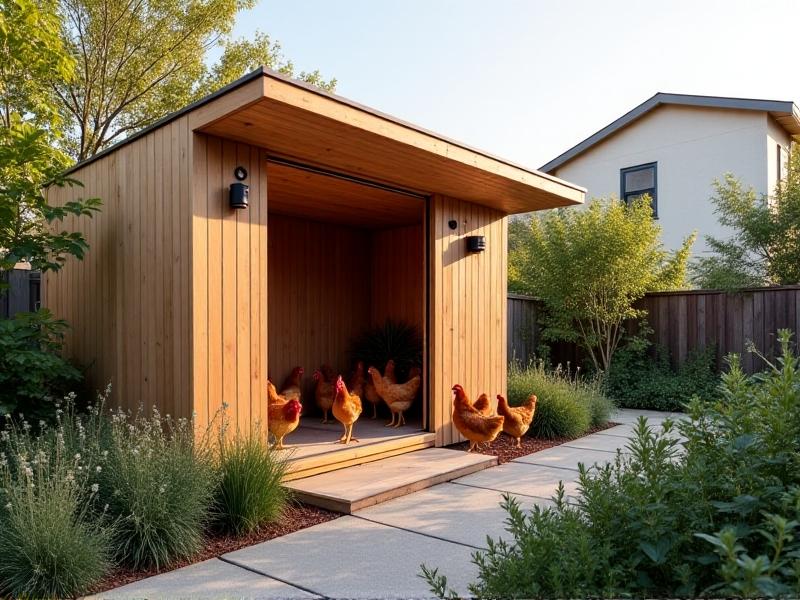
Navigating Local Laws and Zoning Regulations
Before building a coop, research municipal codes governing urban livestock. Many cities limit flock sizes (often 4–6 hens, no roosters) and require setbacks from property lines. Permits may mandate coop specifications like ventilation or insulation. For example, Portland, Oregon, allows up to three hens per 1,000 sq ft of lot space, while Denver bans slaughter. Proactively attending city council meetings or joining local poultry forums helps stay updated on policy changes. Transparency with neighbors—sharing plans and addressing concerns—can prevent disputes. Compliance isn’t just legal; it’s a gesture of respect toward the community hosting your flock.

Designing a Humane and Functional Coop
A well-designed coop balances safety, comfort, and space efficiency. Allow at least 4 sq ft per bird indoors and 10 sq ft outdoors. Include roosting bars, nesting boxes (one per 3–4 hens), and predator-proof latches. Elevate the structure to prevent flooding and insulate against temperature extremes. Foraging areas with mulch or sand encourage natural behavior while reducing odor. Rotate outdoor runs to prevent soil degradation—modular designs using movable fencing work well. A Minneapolis urban keeper created a rooftop coop with solar-powered heaters, proving innovation can thrive in small spaces. Regularly clean bedding to prevent disease and maintain air quality.

Sourcing Ethical Feed and Reducing Waste
Commercial feeds often rely on unsustainable soy or corn. Seek local mills offering non-GMO or organic blends, or supplement with mealworms grown in compost. Reduce waste by repurposing kitchen scraps—avoid avocado, citrus, and salty foods. A Seattle study found urban flocks can divert 200+ lbs of food waste annually. Store feed in airtight containers to deter pests. Collaborate with cafes or markets for grain donations; some urban keepers even brew chicken-safe beer from spent brewery grains. Monitor hens’ health through eggshell quality and feather condition to adjust diets seasonally.
Prioritizing Flock Health in Confined Spaces
Urban density increases disease risks. Schedule annual checkups with poultry-savvy vets—many now offer mobile services. Quarantine new birds for 30 days. Recognize stress signs: reduced egg production, feather pecking, or lethargy. Install dust baths with diatomaceous earth to deter mites. In winter, ensure hydration with heated waterers; in summer, provide shade and misters. A Brooklyn keeper uses herbal supplements like oregano oil for immune support. Keep a first-aid kit with electrolytes, bandages, and styptic powder. Reportable diseases like avian flu require immediate action; know your state’s protocols.
Fostering Positive Relationships with Neighbors
Proactive communication prevents 90% of urban chicken conflicts. Share eggs as goodwill gestures and invite neighbors to meet the flock. Use odor-reducing strategies: compost manure with browns (leaves, sawdust) and deploy fly-repellent herbs like basil. Soundproof coops with insulation if clucking becomes disruptive. Install privacy screens to minimize visual impact. In Toronto, a neighborhood collectively funds a community coop, distributing responsibilities and harvests. Always address complaints promptly—mediation preserves harmony and the future of urban poultry rights.
Sustainable Practices for the Eco-Conscious Keeper
Transform manure into garden gold by hot-composting at 140°F+ to kill pathogens. Install rain barrels for coop cleaning and irrigate gardens with nutrient-rich “compost tea.” Repurpose materials—old cabinets become nesting boxes, pallets turn into roosts. Solar-powered LED lights extend winter laying hours sustainably. Participate in city composting initiatives; some, like San Francisco’s, offer discounts for animal waste drop-offs. By integrating chickens into circular systems, urban keepers reduce their ecological footprint while nurturing soil and soul.
End-of-Life Planning with Compassion
Urban settings lack disposal options for aging or sick birds. Partner with local farms or veterinarians for humane euthanasia services—never abandon birds. Consider burial laws; some cities allow it if depths exceed 3 ft. Memorialize hens through garden markers or donate to avian rescues. Ethical keeping means honoring their entire lifecycle, making tough decisions with empathy. As one Chicago keeper reflects, “They’re pets with benefits—responsibility doesn’t stop at the egg.”

